|
|
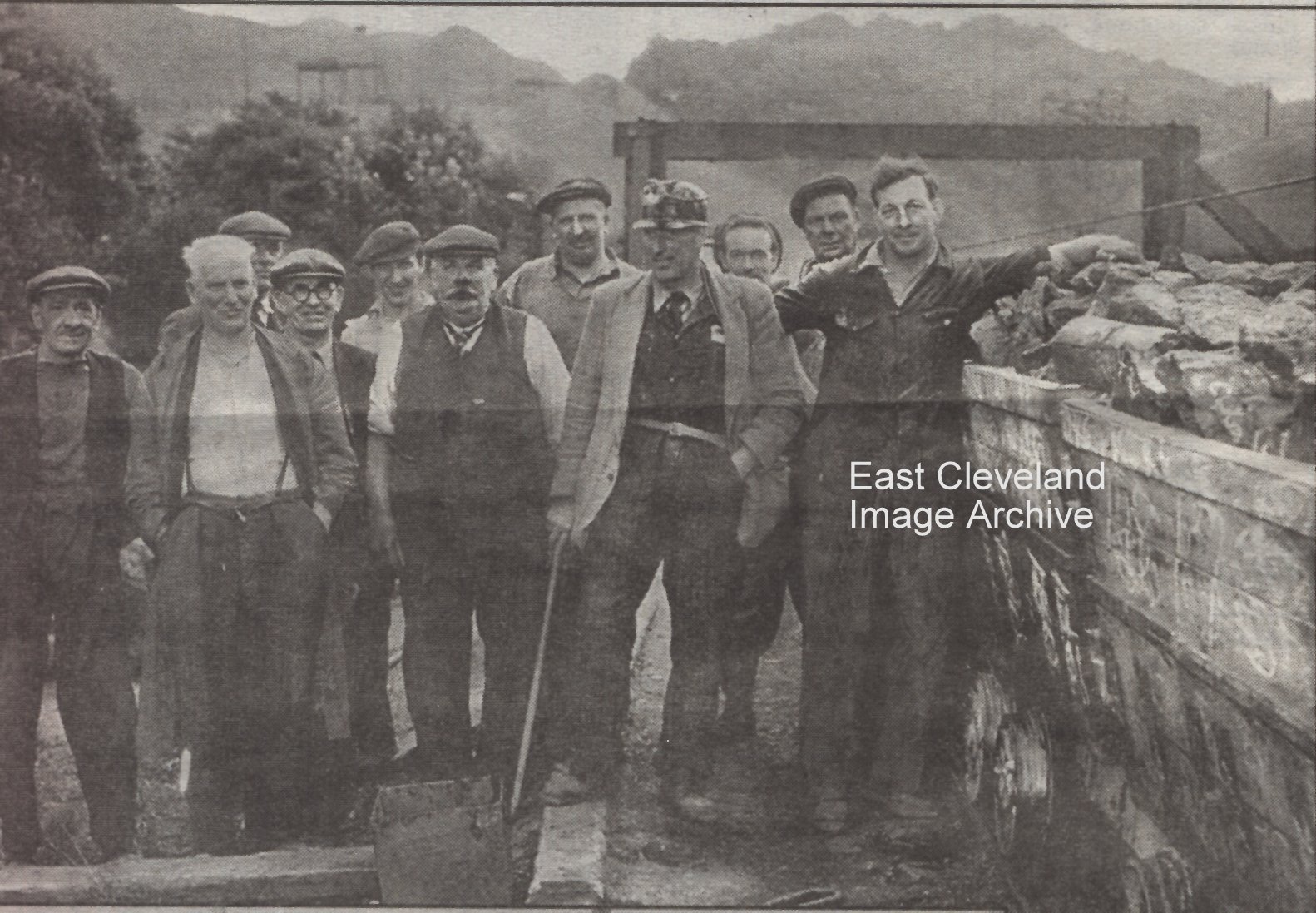
Men of the last shift at Loftus Mine pose with their handiwork. The closing of the mines destabilised a lot of the local communities as people drifted away to find new jobs and eventually moved to be nearer their new place of work.
Back Row: Allan Creswick, Harold Found, Cyril Gibson (blacksmith’s striker), Walter Wilson, Bill Dawson, Don Breckon.
Front Row: Jim Tinkler, Walt Sayers (check weighman), George Adamson, Harold Ralph ‘Lal’ Gibson (blacksmith), Jim Easton (holder of the Daily Herald Award for Industrial Heroism for rescuing Jim Tinkler in an incident which witnessed the death of Jim Trousdale), Allan Readman.
Thanks to Eric Johnson, Joanne Cooper and Cazzi Kerr for names.
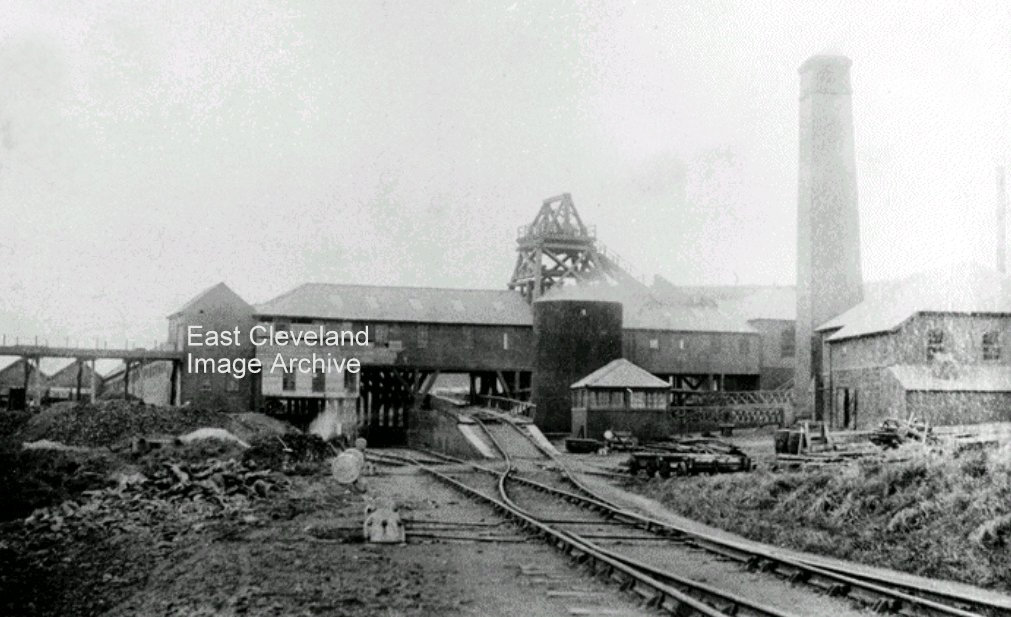
This is an early image of Margrove Park Mine or Magra as it is still known locally. In front of the wooden headgear over the downcast shaft you can see the top of the upcast shaft with the smoke coming from the fire at its base to induce ventilation in the mine. This shaft top was later heightened and a pulley wheel installed on the top; this is now the structure which still survives on the site. The mine closed about 1924; it stood on the site of the present day Caravan Park and connected to the Boosbeck to Middlesbrough railway via a single track which crossed the road from Charltons to Boosbeck with a gated crossing. The village of Margrove Park; known as Magra Park – after the deer park which was here originally – was built in a large rectangle, one side of which was the local shops – all of which were demolished due to mining subsidence (after the mine had closed and they fell into disuse). The only remaining example of a shop (the Co-operative) is the pre-fab building on the opposite side of the road to the village garden. Bob Clements tells us: ”The railway crossing at Magra was a gated crossing. The gates were still there when I was a lad at Magra. That was in the 1940s. I can’t remember when they finally disappeared.” Helen commented: “I have just been walking around this area and found a cordoned off mine shafts in the woods behind the caravan park, but couldn’t tell my younger sister if it was a mine shaft or not!”
Thanks to Simon Chapman for comments and corrections, also Bob Clements for the update on the gates and Helen regarding the former shafts.
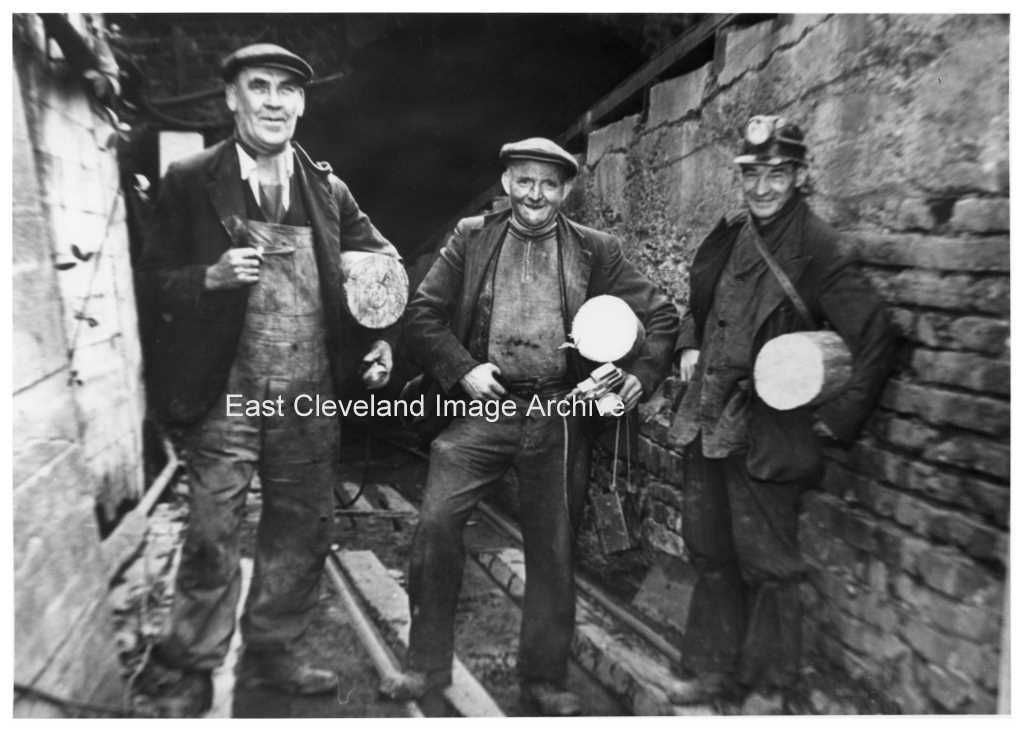
The last three men to leave Loftus mine, (South drift), on 27th September, 1958:
Jack W. Cooke, Arthur (Humpy) Thompson, and William Adamson.
Image courtesy of Keith Bowers.
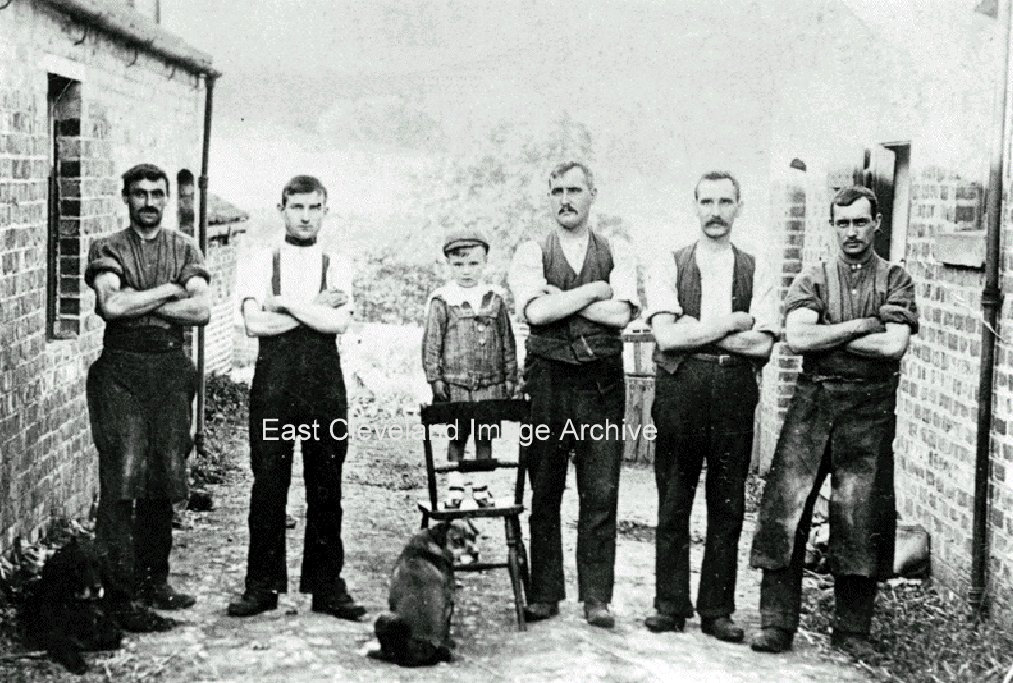
A quirky image by modern standards, but typical of the type of narrative image that occurred in early photography. Alfred Wither (left) blacksmith for Spawood and South Skelton Mines with his striker (right) and stable-hands, an indispensable part of the iron mining industry, they made and maintained just about every tool in use in the mine. Just who the well-dressed little boy is in the middle I do not know – can anyone tell me please?
Image courtesy of Cleveland Ironstone Mining Museum.
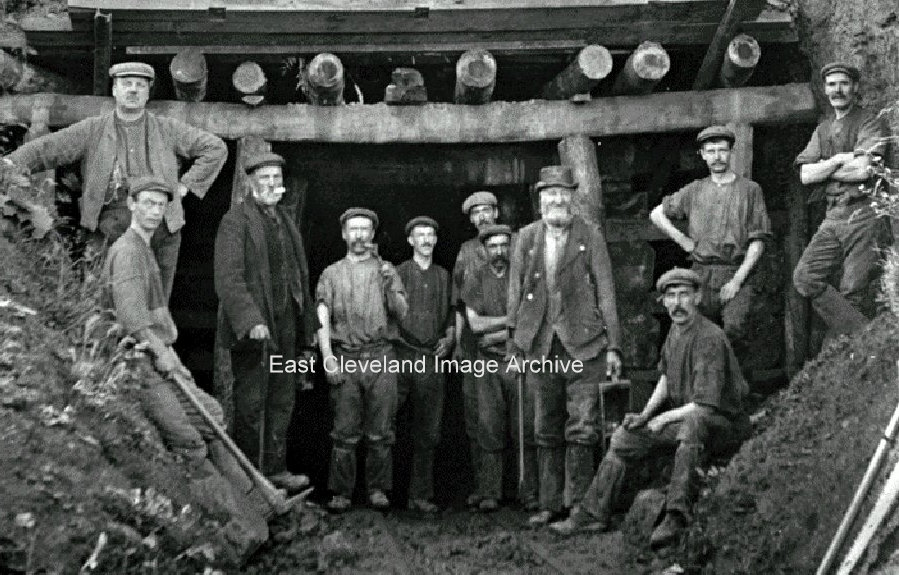
A group of Ironstone Miners and their Marra’s pose at the entrance of the drift, we can see a midge, a pick or two and a pry bar, but no shot canisters – could this be a work party rather than a group of miners? We now know who; from top left: Isaac Collins, Jack Norman (with pick), Jack Leng(?), Bill Pinchin, Charlie Hitchcock, ??, ??, Mr. Swan (Backbye Deputy), Guy Herbert, ??, Ben Hamer.
Original information researched by the late John Owen and provided by Chris Twigg of Hidden-Teesside
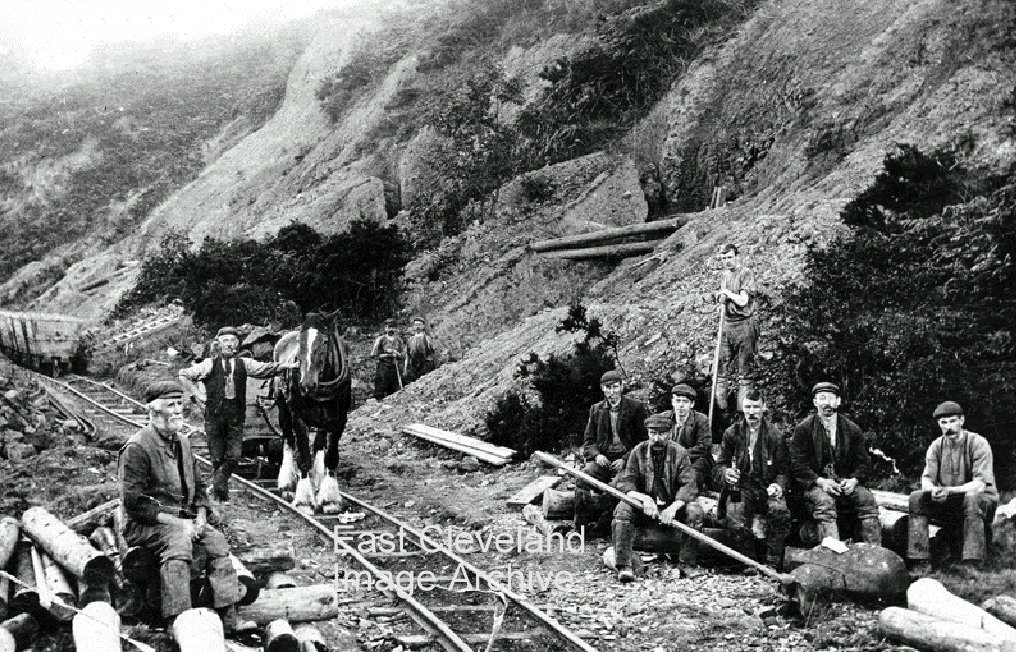
The heading tells us where it is and have the men stopped for a break or just to pose for the photograph? This image is from the tramway that went in the direction of Saltburn at the Upleatham Mine workings and dates from 1910
Image courtesy of Cleveland Ironstone Mining Museum and thanks to David and Mike for the information and updates.
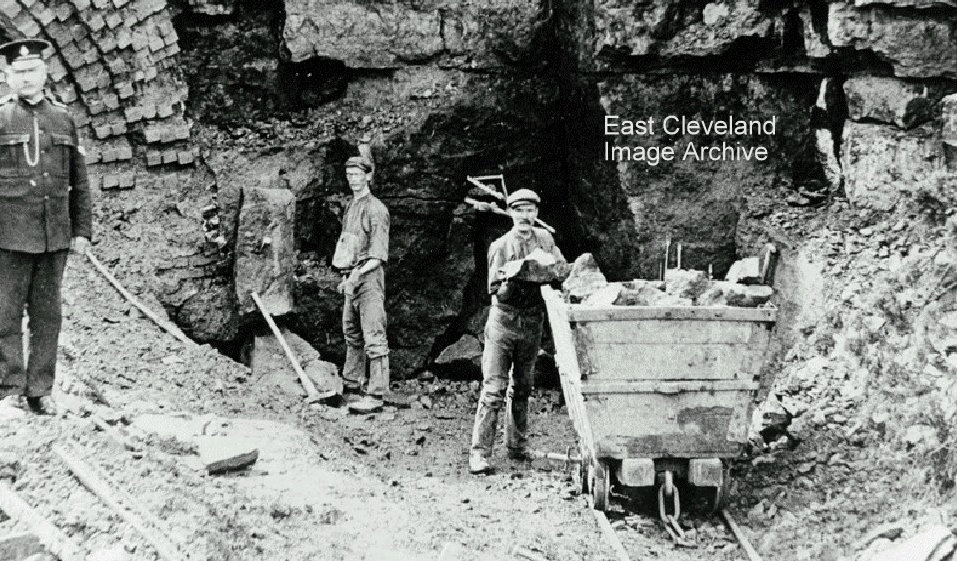
We wondered as to why the constable was present? Mike Holliday tells us: ”This photograph shows miners at work at the recently filled in East Winning digging out Lost Pillars c. 1890. The men in the picture are from left to right:
PC Welburn, Jack Norman, Ben Hamer. PC Welburn as well as being the village policeman was also responsible for collecting due rents from the inhabitants of the house’s as owned by Pease & Partners. With the mine owners being a strict Quaker family – there was a ZERO tolerance on alcohol and gambling – ‘many a village’s “still” was raided and the tenants evicted in the name of Pease & Partners. PC Welburn died in 1910 due to pneumonia at the age of 52.”
Image courtesy of Cleveland Ironstone Mining Museum and thanks to Mike Holliday for that update.
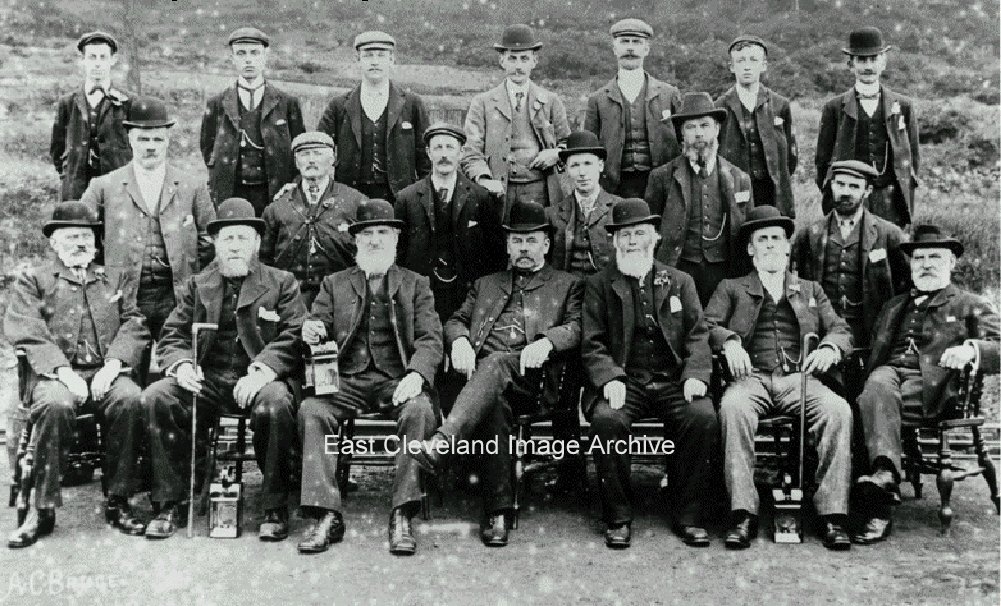
This image of the Upleatham Mine Management dating from 1904 was supplied by the great grand-daughter of William Hall, mining engineer; 1852 – 1942, at New Marske, from the original photograph with all named in William Hall’s handwriting. Looking at the midges on display this group also includes the working management of the mine, not just the topside management.
Back row (left to right): B. Robinson, J. ’Darkie’ Reed, Ralph Clark, Dan Bailey, Harry Bowes, Wilf Hardy, Henry Goldfinch.
Middle row: Pev Thompson, William Douthwaite, Walter Durance, J. Hood, William ‘Wood’ Sigsworth, ’Tiny’ Thirkettle.
Front row: William Hall, Joe Beaumont, William Howes, Christopher ‘Kit’ Heslop, William Durance, William Jones, John Bevan.
M. Foster tells us: “That’s my great great great granddad, William Howe I believe. He was born about 1828. Thanks for putting this photo on, giving me that chance to see him.”
Image courtesy of Cleveland Mining Museum and thanks to Mike Holliday and M. Foster for information and updates.
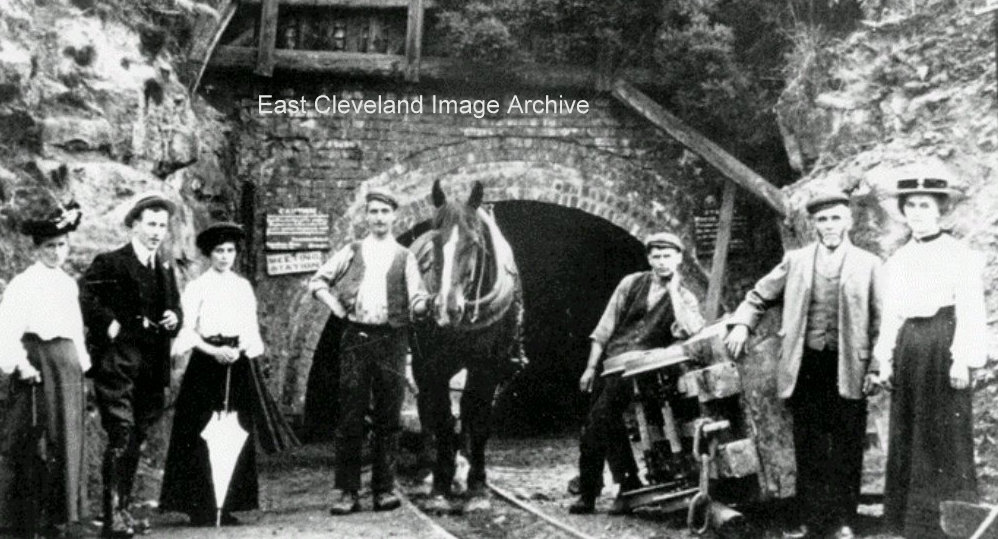
This has to be either bizarre or this group were the owners and their families! Who would visit an iron ore mine in walking out clothes! All the same a very good image of the travelling drift at Upleatham, we are unsure as to why the tub would be on its side though! Paul Anderson tells us: ”The people to the far right are my great, great, great grand parents John (Jack) and Jane Pinchin of 86 Dale Street, New Marske. The photograph is circa 1915-1920. They came up from Manningford, Wiltshire in 1881 looking for work and had 12 children. There are still members of the Pinchin family in New Marske today. ”
Image courtesy of Cleveland Ironstone Mining Museum and thanks to Paul Anderson for that update.
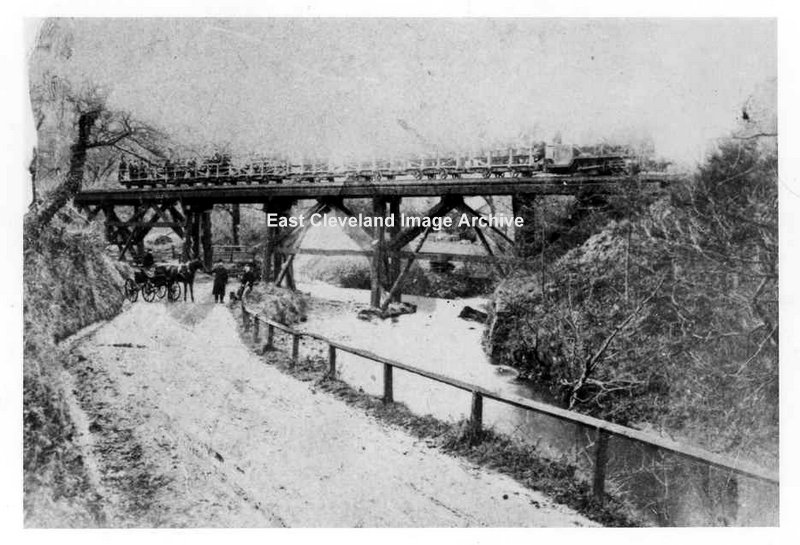
This photograph was taken at Beck Meetings, Dale House on the 20th December 1884 (according to its caption). Simon Chapman advises : ”It shows a train from Mr. Palmer’s Grinkle Park mine carrying workmen towards Port Mulgrave. The locomotives were ‘cab less’ to allow them to travel through the low tunnel under Ridge Lane.” The gentleman with the horse and trap has now been identified as Dawson Robinson the Loftus Ironmonger; perhaps on his regular round delivering to farms and villages in the area.
Many thanks to Simon Chapman for the update.
Page 21 of 21« First«...10...1718192021
|
|










Recent Comments